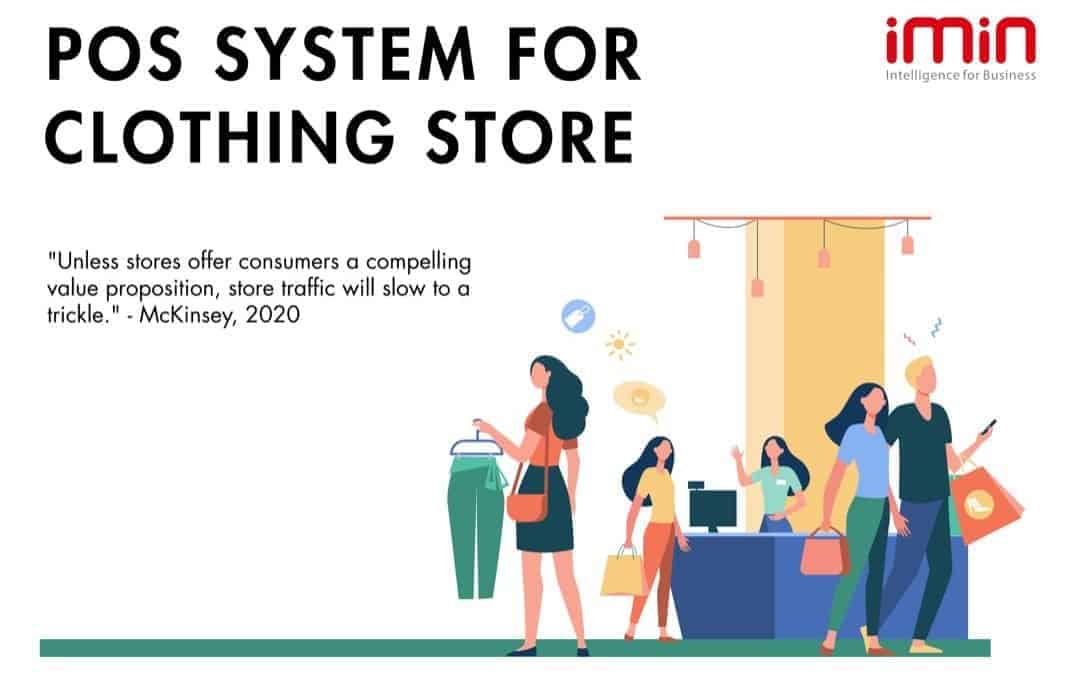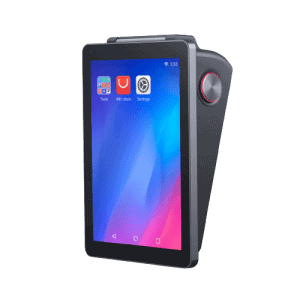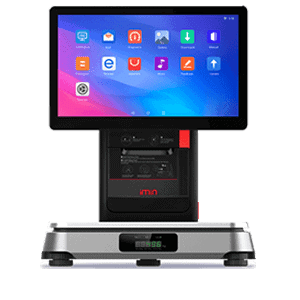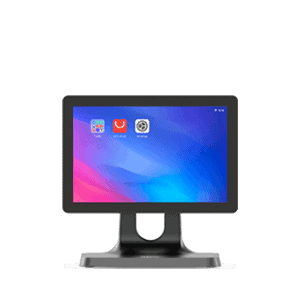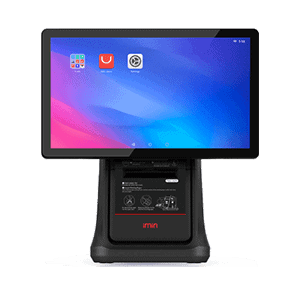“Unless stores offer consumers a compelling value proposition, store traffic—which was already thinning in pre-coronavirus times—will slow to a trickle … Retailers must therefore gain a deep and up-to-date understanding of customer preferences, envision a new role for their stores in light of these preferences, and execute surgical changes to store formats and in-store customer experience.”
– McKinsey on retail stores in the next normal [1]
Although consumer spending in the apparel market is set to rise, there is considerable anxiety over the future of brick and mortar clothing stores.

Predicted consumer spending on fashion per capita worldwide, adjusted for effects of COVID-19 [2]
Gone are the days when only high street fashion chains had guaranteed brand exposure in high rent shopping malls – COVID-19 and the digitalisation of apparel commerce has been an equaliser which reimagined the playing field. To capture the consumer market in physical stores, business owners must have a keen sense of current trends which will morph into new norms.
Drawing on robust research by McKinsey and Deloitte, this article interprets how trends in the fashion industry can be tapped on through POS solutions.
While different players in the fashion industry (think: luxury fashion houses, fast-fashion conglomerates, fashion boutique stores etc.) have different capabilities and needs, global trends will impact them all.
Trend One: Fully customisable apparel

Design and size customisability, one of the key sales trends to look out for, photo by pina messina on Unsplash
In the past, only the rich could afford bespoke apparel. However, as clothing prices dropped to as low as five British pounds for a dress, consumers expect more than one size fits all [3]. From its roots in in-store tailoring and monogramming, customisable apparel has crossed over to the digital sphere, with personalised size and style recommendations becoming more mainstream. By 2030, fully customisable apparel is predicted to command 10 to 30 percent of apparel market share [4].
One key piece of the technology puzzle to fully realise this trend is 3D body scanning technology [5]. 3D body scanning makes use of laser, white light, or image processing to extract size and fit information from individuals. The most granular details about individuals’ figure can be extracted, enabling apparel manufacturers to create fully customised clothing. Using such technology can increase customer satisfaction with the final product, as well as streamline inventory for the business. Furthermore, it enables retailers to collect data on fit and preferences from their customer base, enabling precision marketing and design.
However, while 3D body scanning has become increasingly viable, it has not yet been adopted by most apparel retailers due to cost concerns. Thus, apparel retailers can push themselves ahead of the curve by adopting this technology in physical stores before it becomes commonplace. Indeed, this service may become the differentiating factor between retail stores and their competitors.
Trend Two: Omnichannel integration
Omnichannel integration connects all online and offline assets of a brand (e.g. mobile applications, online stores, physical stores) to create a cohesive and seamless experience for customers. Both McKinsey and Deloitte have found that omnichannel integration is a crucial trend to look out for, with McKinsey concluding that “in-store omnichannel integration will become “table stakes” in the next normal” [6, 7].
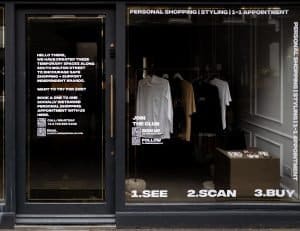
Example of omnichannel integration in a pop-up store, photo by the blowup on Unsplash
To this end, McKinsey has recommended two strategies [6].
First, establish in-store access to customer data in real time. When employees have more data on customer profiles and popular items, they can tailor store displays and configure floor plans accordingly. For example, if one item gets more views and likes on the brand’s website, employees who have access to this data can prominently feature the same item in window displays. During peak seasons, employees can also better manage crowds and prepare stocks in advance.
Second, automate repetitive manual work. Employee management, inventory controls, and customer loyalty programmes are just some possible functions of POS devices. Let your POS device handle the work, to free up your employees for higher value work like customer relationship management and live interactions with customers.
For example, retailers can use self-ordering kiosks to minimise the workload of employees and move queues along more quickly. As hygiene remains a concern for consumers, self-ordering kiosks also enable contactless payments.
iMin’s S1 self-ordering kiosk
As aptly summarised by McKinsey, “to make room for new omnichannel activities, traditional in-store tasks must be endlessly reprioritized and simplified, without compromising on the in-person customer experience. And to provide a flawless yet profitable clicks-to-bricks experience, retail inventory and systems need to become more sophisticated, precise, and unified from end to end.” [8]If the fashion industry can capture the value of omnichannel integration, it will surely achieve rapid growth.
Trend Three: Increasing strain on inventory and fulfilment
Today, the average cycle of a piece of clothing from drawing board to runway can be as short as two weeks [9]. Furthermore, the expectation of free exchanges and returns are becoming a norm for consumers, adding pressure to inventory and fulfilment systems. Lastly, as sustainability becomes a hot button issue, consumers are pushing for radical transparency in the supply chain [10]. This means that every piece of apparel has to be accounted for, from the moment of fabric selection to sale, and even when it is returned.

Clothing in an abandoned factory, photo by Francois Le Nguyen on Unsplash
In a nutshell, consumers are expecting more, faster. This should be reassuring to retail store operators, as it strengthens the need for physical stores as a touchpoint in the inventory and fulfilment cycle. Yet, this expectation puts enormous strain on inventory and fulfilment capabilities.
To prevent inventory demand from becoming a problem, fashion retailers can follow Zara’s tactic. Zara successfully implemented a strong inventory tracking system, combining its website, physical stores, and warehouse [11]. Using RFID, Zara conducts advanced inventory tracking of all its SKUs. Whenever a piece of clothing is sold, it is automatically updated in the system, and staff will be notified to replenish the item. Real-time stocks in each store location are also shown on the website, so consumers know for sure if they can find an item in-store.
Retailers can start by choosing powerful POS devices that can handle advanced inventory management, especially multi-channel and multi-store retailers who have a huge inventory to manage. To successfully manage the demands of omnichannel integration and inventory management, retailers can look the following key features of POS devices.
Cloud-based POS solutions.
Combining sales management and inventory management simplifies business operations in a centralized POS database, providing a firm, data-backed foundation for businesses to plan their growth strategy.
A cloud-based solution also enables collection of real-time sales data, and sales reports can be configured to include indicators which are important to the business. In addition, multiple devices can be connected to synchronise the entire business. The demand on inventory management further underscores the need for a real-time, cloud-based POS system.
Android based POS system.
The key advantage of an Android POS system is customisability. Increasing volumes of data collection and sales analytics will become a mainstay in the retail industry. Sales executives can control dashboards for retail shops, preventing employees from becoming overwhelmed by the sheer volume of data.
Furthermore, some businesses only require basic features, so customisability prevents unnecessary expenditure on hardware that the business does not need.
Thus, when choosing a POS, work with the hardware and software provider to create a unique and comprehensive business management suite.
POS devices with powerful processors.
Retail sellers cannot skimp on a powerful POS processor. A device’s processor determines how fast the device works, including how fast applications function and how quickly real-time sales data is synchronised on local devices. It will also enable faster payment processing.
In the apparel market, speed is crucial because of the variety and high turnover rate of clothing. The more powerful a retail store’s POS processor is, the better it can handle day to day operations. A powerful POS processor also enables multi-tasking – for example, business owners can deploy their POS to oversee staff management or a customer loyalty program.
An example of a POS device that has a powerful processor is iMin’s D1 Pro.
iMin’s D1 Pro
iMin’s latest desktop POS, the D1 Pro, runs the Android 11 Go, a more advanced OS than most other POS devices which run Android 7.1. With a built-in scanner and high-speed printer, the D1 Pro also has the added benefit of providing contactless payment services and receipt printing.
Follow what’s in Vogue
The retail industry is undergoing a period of fundamental transformation, from supply chains to marketing. Business owners need to recognise and tap on trends to give their retail stores a competitive edge.
Interested to know more about POS Solutions? Clink here to explore more.
References
[1] https://www.mckinsey.com/industries/retail/our-insights/reimagining-stores-for-retails-next-normal
[2] https://www.statista.com/forecasts/1161052/fashion-consumer-spending-per-capita-forecast-in-the-world
[3] https://www.theguardian.com/business/2019/jun/22/cost-cheap-fast-fashion-workers-planet
[4] https://www.deloittedigital.com/content/dam/deloittedigital/us/documents/blog/blog-20200610-apparel-trends.pdf
[5] https://www.fibre2fashion.com/industry-article/2980/a-glimpse-of-3-d-body-scanning-technology-in-the-apparel-industry
[6] https://www.mckinsey.com/industries/retail/our-insights/reimagining-stores-for-retails-next-normal
[7] https://www.deloittedigital.com/content/dam/deloittedigital/us/documents/blog/blog-20200610-apparel-trends.pdf
[8] https://www.mckinsey.com/industries/retail/our-insights/rfids-renaissance-in-retail
[9] https://www.channelnewsasia.com/cnainsider/true-cost-demand-cheap-clothes-fast-fashion-industry-environment-220706
[10] https://www.mckinsey.com/~/media/mckinsey/industries/retail/our%20insights/fashions%20new%20must%20have%20sustainable%20sourcing%20at%20scale/fashions-new-must-have-sustainable-sourcing-at-scale-vf.pdf
[11] https://www.cbinsights.com/research/fashion-tech-future-trends/








